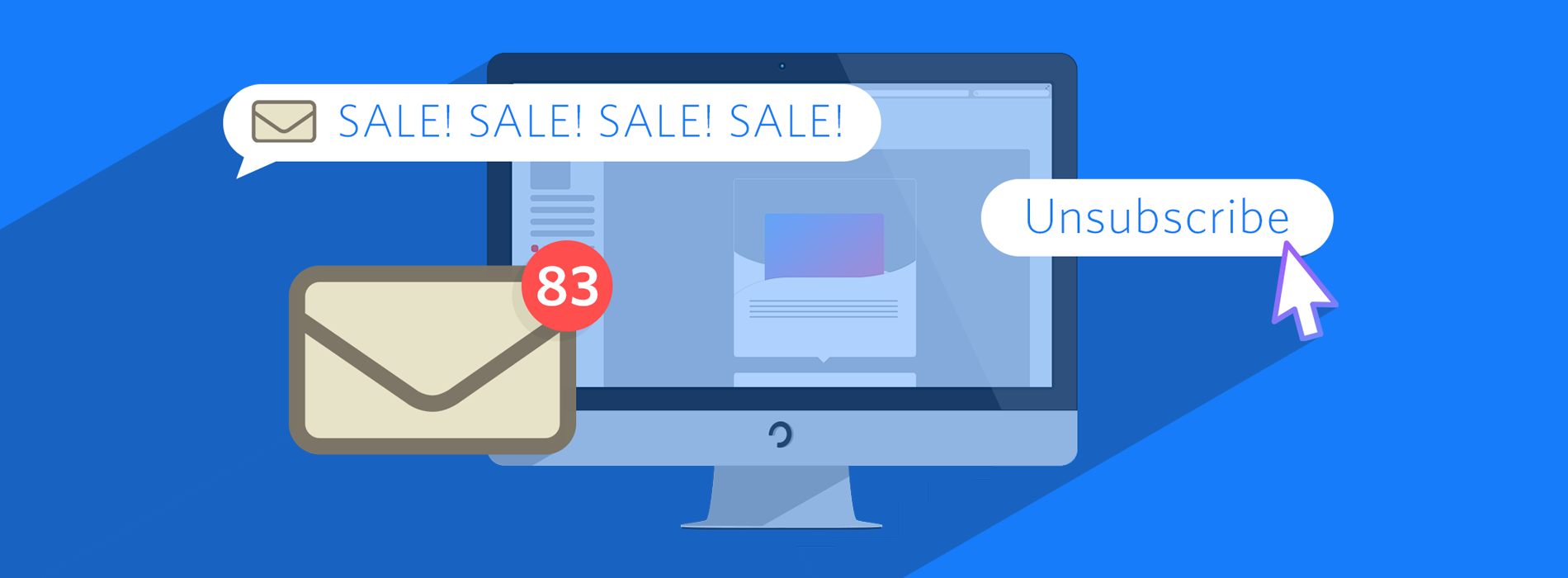Why consumers unsubscribe from retail emails, and how retailers can minimise this through more relevant and timely communication.
According to a survey from Engage Hub, 90% of consumers have unsubscribed from retail emails in the past 12 months.
Among the main problems cited by the survey respondents were too many emails, or emails not being relevant to their interests. 46% said they receive too many messages – 26% said they get messages from some retailers at least once a day, while 15% receive more than that.
This is a common complaint from customers, and retailers do have to consider email frequency. Consumers will always report that they receive too many emails, but retailers need to study their results to decide on this.
There’s a balance to be struck between sending too many and running the risk of pushing up unsubscribe rates, and missing out on opportunities to sell by sending too few. Retailers can also send too many of the same type of email. For example, Gap sends emails advertising sales and special deals several times a week, thereby lessening the effect of the tactic.


I’d argue that relevance may be a bigger issue here. For instance, I’ll ignore the majority of Gap’s emails as there’s only so many shirts you can buy, but I will take note of them when I’m looking for new clothes as they are then relevant to me.
Indeed, 24% of respondents in the Engage Hub survey have unsubscribed due to irrelevant emails, and a similar pattern is shown in a recent MarketingSherpa survey:


How Do Retailers Make Emails and Messaging More Relevant?
The answer is to use customer data and purchase behavior to make communications more relevant.
There are a number of ways to do this, including…
Segmentation
Subscribers can be segmented by various factors using behavioural segmentation, such as location, gender, age, propensity to purchase, interests and more to create more relevant messaging.


Personalisation
This is harder to implement than segmentation, but the rewards are even greater relevance, with emails tailored to individual users.
Personalised email campaigns can generate 30% more revenue for retailers, but just 3% are doing it successfully.
Indeed, Engage Hub’s survey found that 46% of consumers said they would be more likely to click through to purchase if offers were tailored to their preferences.
(Use slider tool to switch between images)
[image-comparator width=”500″]
[image-comparator-left]

[image-comparator-right]

[/image-comparator]
Examples of personalisation include browse abandonment emails, which are sent to customers who look at products without adding them to their basket.
Customers are sent an email showing the items they viewed, as well as other recommendations based on previous browsing and purchase history.


Timing
Timing matters. An email that lands in a customer’s inbox while they are considering a purchase is more likely to find a response.
For example, emails can be timed around annual events like Valentine’s Day, Christmas or even customer’s birthdays, as in this example from Ted Baker.


Cart abandonment emails also rely on timing. There’s a window of opportunity from when the customer abandons a purchase – normally an hour or two – when emails are most effective.


Optimize for Mobile
Emails are now more likely to be viewed on mobile than desktop, so they have to work on mobile to be effective.


In Summary
As the survey says, the old spray and pray approach will produce diminishing returns, and retailers need to be more sophisticated in their email marketing.
By using the data at their disposal, from previous transactions and on-site behavior, information that customers have submitted on preferences, retailers can create targeted and personalized messaging which is relevant to subscribers.
Speak to an expert
Learn how to convert your online audience into revenue with our experts.
Graham Charlton
Graham Charlton is Editor in Chief at SaleCycle. He's been covering ecommerce and digital marketing for more than a decade, having previously written reports and articles for Econsultancy. ClickZ, Search Engine Watch and more.








![Valentine’s Day Ecommerce Tips and Trends [2024 Strategy]](https://www.salecycle.com/wp-content/uploads/2019/01/valentines-ecommerce-1.png)




![How SaleCycle helped Vodafone increase their online sales by an additional 2,000 additional sales per month [Extended Version]](https://www.salecycle.com/wp-content/uploads/2023/08/vodafone-banner.webp)




